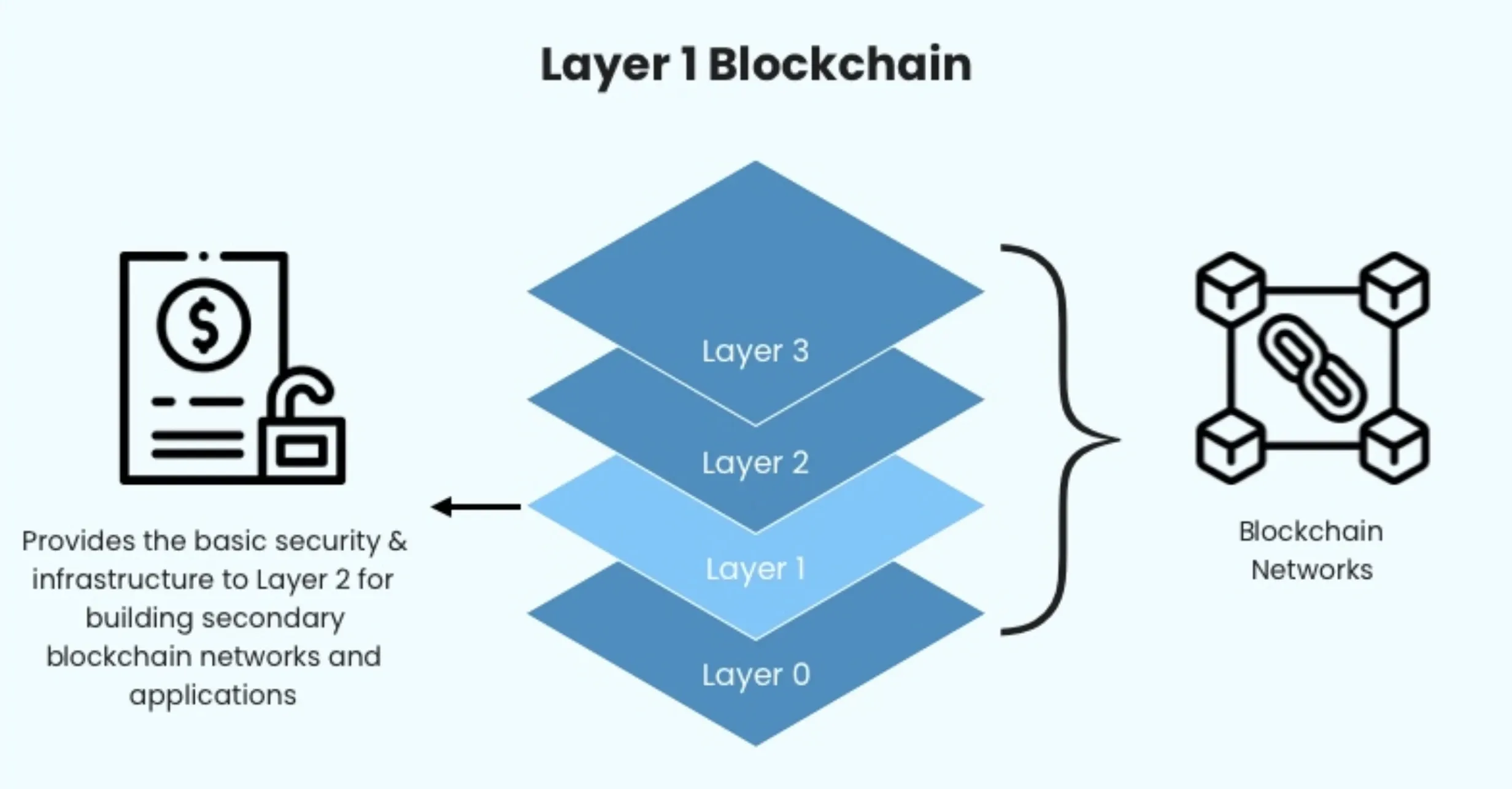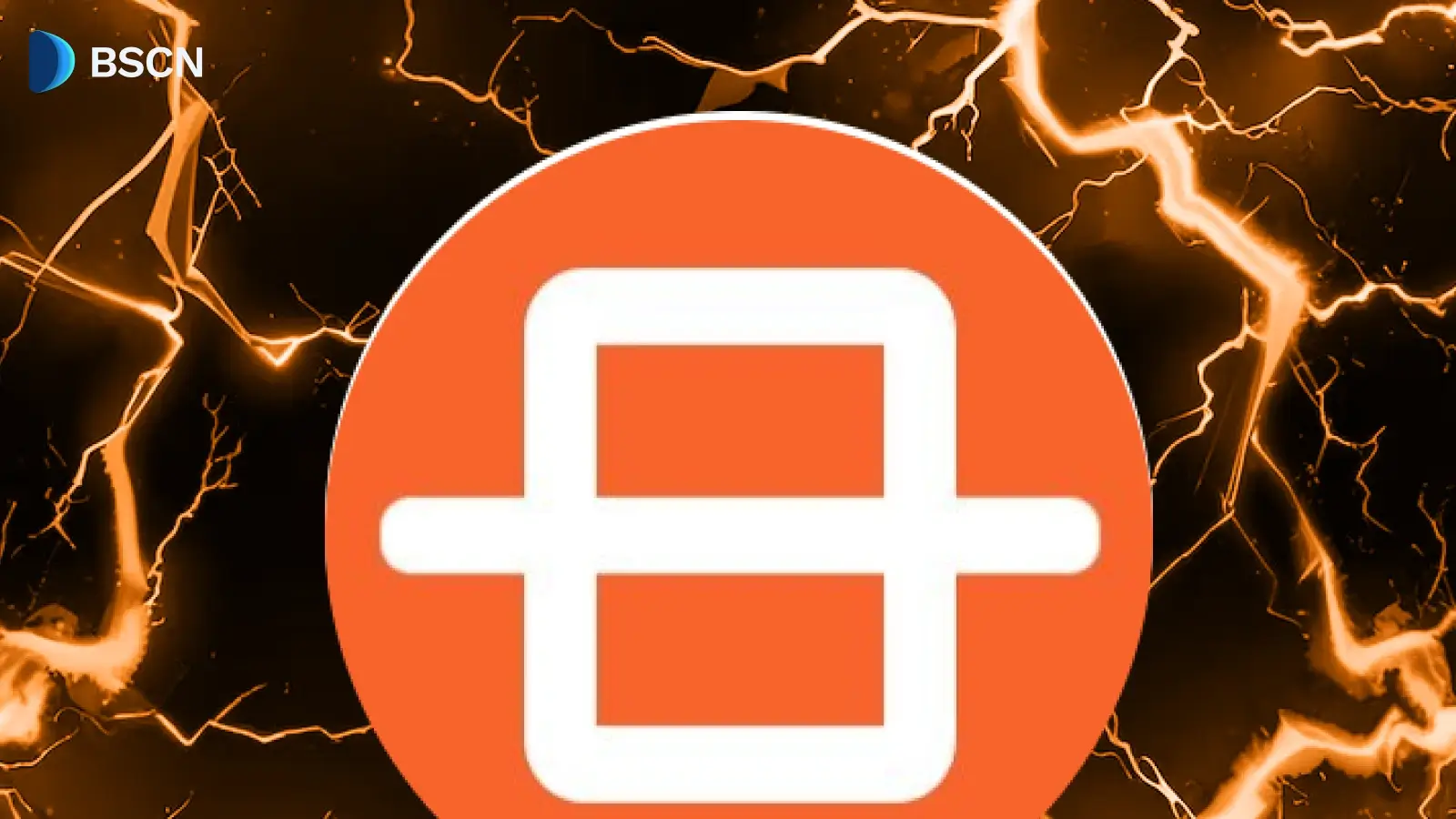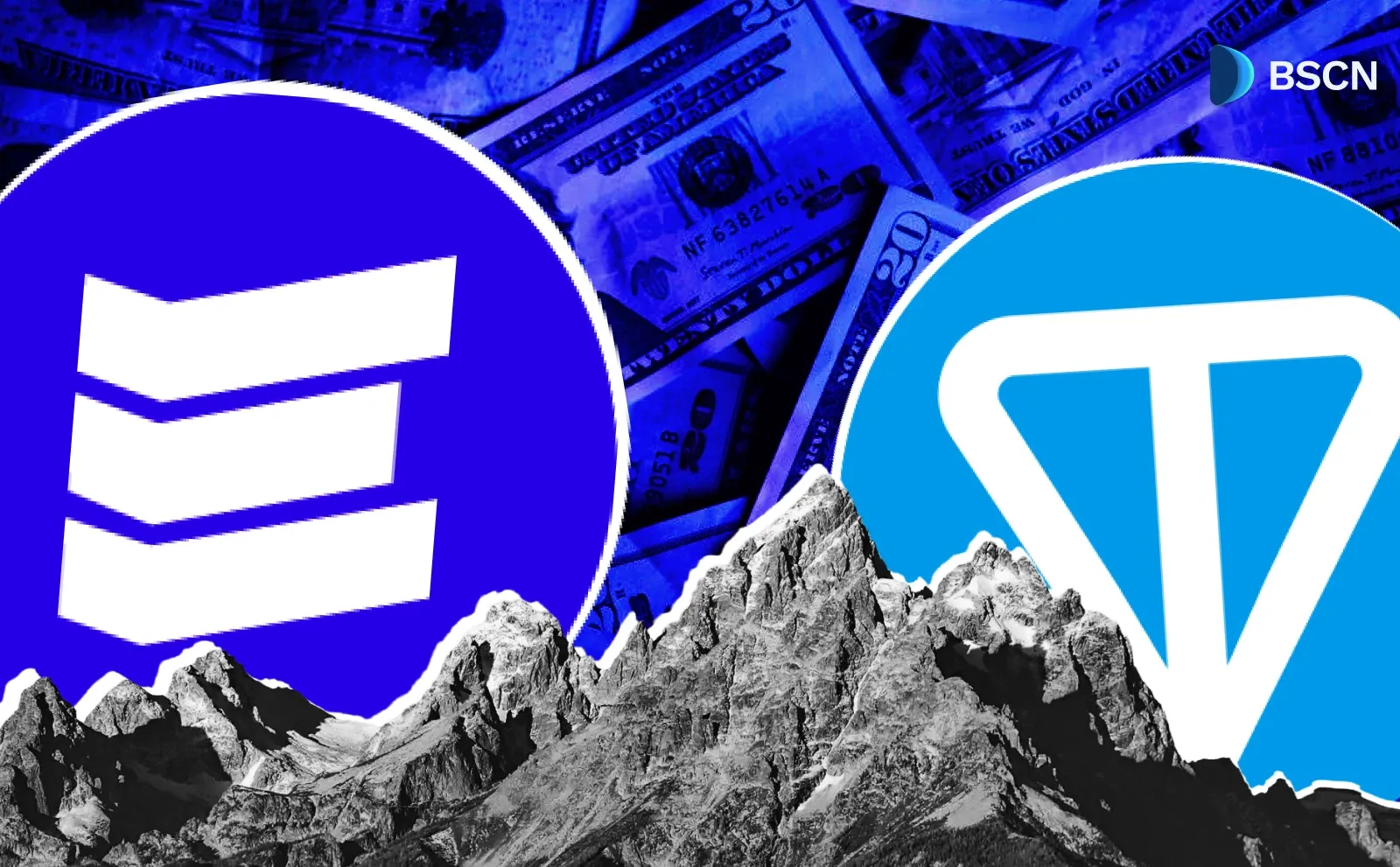Deepdive
(Advertisement)
Layer One Blockchains Explained: The Foundation of Decentralized Technology

Discover the critical world of Layer 1 blockchains, their unique features, top projects, and transformative potential in the decentralized ecosystem. A comprehensive guide for crypto enthusiasts and investors.
Crypto Rich
February 6, 2025
(Advertisement)
Table of Contents
Layer 1 blockchains represent the foundational infrastructure of the decentralized digital landscape, serving as the fundamental protocol layers that enable groundbreaking blockchain technologies. These base-level networks form the critical backbone of cryptocurrency and blockchain ecosystems, providing the essential framework for building transformative decentralized applications (dApps) and digital economies.
What Are Layer 1 Blockchains?
A Layer 1 blockchain is the primary, base-level blockchain network that processes and validates transactions directly on its native blockchain. Unlike secondary layers, Layer 1 blockchains maintain complete autonomy in their consensus mechanisms, security protocols, and transaction validation processes.
Key Characteristics of Layer 1 Blockchains
- Native Cryptocurrency: Each Layer 1 blockchain typically has its own native token used for transaction fees, staking, and governance
- Full Decentralization: Complete control and validation occur within the primary network
- Independent Consensus Mechanisms: Unique protocols like Proof of Work (PoW), Proof of Stake (PoS), or hybrid models
- Scalability Solutions: Built-in or evolving mechanisms to address transaction speed and network congestion

Top Layer 1 Blockchain Projects
1. Bitcoin
- The original Layer 1 blockchain
- Pioneering decentralized digital currency
- Primarily used as a store of value and digital gold
- Proof of Work (PoW) consensus mechanism
2. Ethereum
- Smart contract pioneer (Ethereum Virtual Machine)
- Supports complex decentralized applications
- Transitioned from Proof of Work to Proof of Stake
- Largest ecosystem for decentralized finance (DeFi) and NFTs
3. Solana
- High-performance blockchain
- Extremely fast transaction speeds
- Low transaction costs
- Proof of History (PoH) consensus mechanism
4. Cardano
- Research-driven blockchain platform
- Emphasizes academic peer-review
- Proof of Stake (PoS) consensus
- Strong focus on sustainability and scalability
5. Dogecoin
- Originated as a humorous internet memecoin in 2013
- Unexpected transformation from joke to legitimate Layer 1 blockchain
- Strong community-driven ecosystem
- Proof of Work consensus mechanism
- Gained mainstream attention through celebrity endorsements and social media momentum
6. Berachain
- Emerging Layer 1 blockchain with a unique memecoin-inspired ecosystem
- Focuses on innovative tokenomics and community engagement
- Utilizes a novel Proof of Liquidity consensus mechanism
- Part of the broader "Bera" meme coin universe
- Aims to combine entertainment value with serious blockchain infrastructure
The Rise of Meme-Driven Layer 1 Blockchains: A Cultural Phenomenon?
The emergence of blockchain projects like Dogecoin and Berachain represents a fascinating intersection of internet culture, cryptocurrency, and technological innovation. These platforms demonstrate how community enthusiasm and viral marketing can transform seemingly lighthearted concepts into serious technological endeavors.
Dogecoin: From Meme to Mainstream
Initially created as a satirical response to cryptocurrency speculation, Dogecoin has defied expectations by becoming a legitimate Layer 1 blockchain. Its journey illustrates the unpredictable nature of blockchain technology and digital communities. Despite its humorous origins, Dogecoin has:
- Maintained a robust and passionate global community
- Processed billions of dollars in transactions
- Attracted high-profile supporters like Elon Musk
- Demonstrated the potential for community-driven blockchain projects

Berachain: The Next Evolution of Meme-Driven Blockchain?
Berachain represents a more sophisticated approach to the meme-blockchain concept. By integrating serious technological infrastructure with a playful, community-centric approach, it showcases the evolving landscape of Layer 1 blockchains. Key innovations include:
- A unique Proof of Liquidity consensus mechanism
- Deep integration with decentralized finance (DeFi) protocols
- Emphasis on community governance and participation
- Bridging the gap between internet culture and blockchain technology

Layer 1 vs Layer 2: A Profound Technological Dichotomy
Layer 1 Characteristics: The Foundational Protocol
Layer 1 blockchains represent the quintessential base protocol, embodying the most fundamental layer of blockchain architecture. These robust networks are meticulously designed to handle primary transaction processing with unparalleled integrity and autonomy. Inherent security and decentralization are deeply embedded in their architectural framework, ensuring that each transaction is processed with maximum transparency and minimal centralized intervention.
The native token and consensus mechanism are not mere technical components but represent the lifeblood of these blockchain ecosystems. Each native token serves multiple critical functions: facilitating transactions, enabling network governance, incentivizing network participants, and representing a store of economic value within the blockchain's unique economic model.
Layer 2 Characteristics: The Scalability Enhancers
In contrast, Layer 2 solutions emerge as sophisticated architectural overlays constructed atop existing Layer 1 blockchains. These ingenious technological frameworks are strategically engineered to address the fundamental scalability and performance challenges inherent in base-level blockchain networks. By building complementary infrastructure, Layer 2 solutions aim to dramatically improve transaction throughput, reduce network congestion, and minimize transaction costs.
Critically, these solutions derive their foundational security from the underlying Layer 1 blockchain, creating a symbiotic relationship that leverages the robust security mechanisms of the base protocol while introducing enhanced computational efficiency. Prime examples of such innovative Layer 2 solutions include the Lightning Network for Bitcoin, which enables rapid micro-transactions, and Polygon for Ethereum, which provides a flexible framework for scaling decentralized applications.
Pros and Cons of Layer 1 Blockchains: A Comprehensive Analysis
Advantages: The Pillars of Decentralized Empowerment
Layer 1 blockchains represent the pinnacle of decentralized technological architecture, offering a multifaceted array of compelling advantages. Complete decentralization stands as their most profound attribute, eliminating single points of failure and distributing network control across a diverse, global network of participants.
The paradigm of independent governance ensures that no single entity can unilaterally dictate network parameters, fostering a truly democratic technological ecosystem. Native security mechanisms, meticulously crafted through sophisticated cryptographic protocols, provide robust protection against potential malicious interventions. Direct control over protocol upgrades empowers the community, allowing for dynamic, consensus-driven technological evolution.
Perhaps most importantly, these blockchain networks create fertile ground for pioneering consensus models, encouraging continuous innovation in distributed computational paradigms.
Challenges: Navigating Technological Limitations
Despite their revolutionary potential, Layer 1 blockchains confront significant technological hurdles. Scalability limitations represent a persistent challenge, with many networks struggling to process transactions at the speed and volume required for mainstream adoption.
Proof of Work mechanisms, while groundbreaking, suffer from substantial energy consumption, raising critical environmental concerns. Complex upgrade processes can create technological inertia, making it challenging to implement necessary improvements swiftly. Network congestion remains a recurring issue, potentially compromising transaction efficiency during periods of high demand.
The substantial initial development costs further complicate the landscape, creating significant barriers to entry for emerging blockchain initiatives.
Future of Layer 1 Blockchains: Technological Horizons
The future of Layer 1 blockchains is characterized by relentless technological innovation. Enhanced scalability solutions promise to address current performance bottlenecks. More energy-efficient consensus mechanisms will emerge, addressing critical environmental concerns.
Improved interoperability between different networks will break down existing technological silos, creating more integrated and flexible blockchain ecosystems. Advanced smart contract capabilities will expand the potential applications of blockchain technology, transforming industries beyond finance.
The ultimate trajectory points towards greater integration with real-world applications, positioning blockchain as a transformative technological infrastructure.
Conclusion
Layer 1 blockchains are more than just technological infrastructures; they represent the foundational networks driving the next generation of decentralized digital economies. As the technology matures, these base-level protocols will continue to evolve, offering more efficient, secure, and scalable solutions for global digital interactions.
Read Next...
Disclaimer
Disclaimer: The views expressed in this article do not necessarily represent the views of BSCN. The information provided in this article is for educational and entertainment purposes only and should not be construed as investment advice, or advice of any kind. BSCN assumes no responsibility for any investment decisions made based on the information provided in this article. If you believe that the article should be amended, please reach out to the BSCN team by emailing [email protected].
Author
 Crypto Rich
Crypto RichRich has been researching cryptocurrency and blockchain technology for eight years and has served as a senior analyst at BSCN since its founding in 2020. He focuses on fundamental analysis of early-stage crypto projects and tokens and has published in-depth research reports on over 200 emerging protocols. Rich also writes about broader technology and scientific trends and maintains active involvement in the crypto community through X/Twitter Spaces, and leading industry events.
(Advertisement)
Latest News
(Advertisement)
Crypto Project & Token Reviews
Project & Token Reviews
Comprehensive reviews of crypto's most interesting projects and assets
Learn about the hottest projects & tokens
Latest Crypto News
Get up to date with the latest crypto news stories and events













